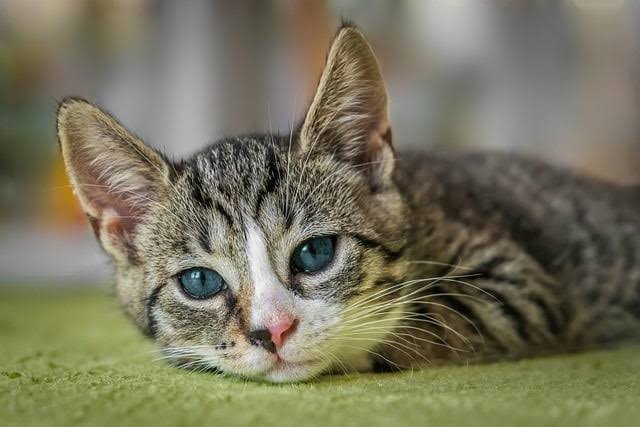
simply amazing always for you.
Cats are beloved pets worldwide, known for their independence, affectionate nature, and unique personalities. One of the most common questions for cat owners or those considering getting a cat is, “How long do cats live?” Understanding the lifespan of cats involves considering various factors such as lifestyle, breed, health care, and environment. Here’s a detailed explanation to help you better understand how long cats typically live and what influences their longevity.

General Lifespan of Cats
The lifespan of a cat varies significantly depending on whether it is an indoor or outdoor cat:
Indoor Cats
- Indoor cats tend to have a much longer lifespan, typically ranging from 12 to 18 years.
- With proper care, some cats live well into their 20s, with record-holding cats even reaching their 30s.
- This longevity is largely due to the controlled and safe environment they live in, which minimizes risks such as accidents, predators, and exposure to diseases.
Outdoor Cats
- Outdoor cats generally live shorter lives, with an average lifespan of 5 to 10 years.
- The reduced lifespan is due to various dangers associated with outdoor living, such as traffic accidents, fights with other animals, exposure to extreme weather conditions, and higher susceptibility to infectious diseases.
Key Factors Influencing a Cat’s Lifespan
Several factors play a critical role in determining how long a cat lives:
1. Breed
- Different cat breeds have varying lifespans due to genetic predispositions.
- Siamese Cats: Known for their long lives, Siamese cats often live 15 to 20 years or more.
- Maine Coon Cats: These large, friendly cats typically live around 10 to 13 years.
- Persian Cats: Generally live 12 to 16 years but may face health issues like breathing difficulties due to their flat faces.
- Mixed-breed cats often have fewer genetic health issues and may live longer on average than purebred cats.
2. Health Care
- Regular veterinary checkups are vital for identifying and addressing potential health issues early.
- Vaccinations, parasite prevention (e.g., for fleas, ticks, and worms), and dental care are crucial components of maintaining a cat’s health.
- Neutered or spayed cats often live longer due to reduced risks of reproductive-related diseases and roaming behavior.
3. Diet and Nutrition
- A balanced, species-appropriate diet plays a critical role in a cat’s overall health and longevity.
- High-quality cat food with the right balance of protein, fat, vitamins, and minerals helps maintain optimal body weight and prevent conditions like diabetes, obesity, and kidney disease.
- Proper hydration is equally important. Cats often prefer running water sources, so providing a cat water fountain can encourage them to drink more.
4. Lifestyle and Environment
- Indoor cats benefit from a controlled environment free from outdoor hazards.
- Providing mental and physical stimulation through toys, scratching posts, and climbing structures can improve their quality of life and reduce stress-related illnesses.
- For outdoor cats, ensuring they have a safe, secure area or supervised outdoor time can help mitigate some risks.
5. Activity Level and Weight Management
- Regular playtime and exercise are essential to keeping cats at a healthy weight.
- Obesity in cats can lead to serious health problems, including arthritis, diabetes, and heart disease.
6. Genetics
- Just as in humans, genetics significantly influence a cat’s lifespan. Cats from a healthy lineage with fewer inherited diseases tend to live longer.
7. Medical Advancements
- Modern veterinary medicine has greatly improved the lifespan of cats. Access to advanced diagnostics, medications, and treatments for chronic conditions like hyperthyroidism, diabetes, and kidney disease means cats can live longer, healthier lives.
Stages of a Cat’s Life
Cats, like humans, go through different life stages, and each stage has unique needs:
- Kitten (0–1 year):
- Rapid growth and high energy levels characterize this stage.
- Proper nutrition and vaccinations are critical for setting the foundation for a long, healthy life.
- Adult (1–7 years):
- Cats are typically in their prime, with stable energy levels.
- Regular veterinary care and a balanced diet are essential during this phase.
- Senior (7–10 years):
- Cats may start to show signs of aging, such as reduced activity levels and changes in appetite.
- Regular health screenings for age-related conditions become increasingly important.
- Geriatric (10+ years):
- Older cats may experience chronic conditions like arthritis, kidney disease, or hyperthyroidism.
- Adjustments to diet and increased vet visits are often necessary to ensure their comfort and health.
Signs of Aging in Cats
As cats age, they may exhibit the following signs:
- Reduced Mobility: Arthritis or joint pain may make it harder for them to jump or climb.
- Behavioral Changes: Older cats might sleep more, become less active, or show changes in social behavior.
- Weight Changes: Weight loss can indicate underlying health issues, while weight gain might suggest reduced activity.
- Dental Problems: Bad breath, difficulty eating, or drooling may signal dental disease.
How to Extend Your Cat’s Lifespan
While some factors like genetics are beyond your control, you can take proactive steps to help your cat live a long, healthy life:
- Provide Regular Vet Care: Schedule annual checkups for young cats and biannual checkups for older cats.
- Ensure Proper Nutrition: Feed your cat high-quality food suited to their age, size, and health needs.
- Create a Safe Environment: Keep cats indoors or provide a secure outdoor space.
- Encourage Exercise: Use toys, laser pointers, or interactive activities to keep your cat active.
- Maintain Dental Health: Brush your cat’s teeth if possible or provide dental treats and regular cleanings.
Final Thoughts
Cats are resilient and adaptable creatures, and with the proper care, many can live well into their senior years. Indoor cats typically enjoy longer, healthier lives thanks to safer environments and better access to health care. By paying attention to your cat’s diet, health, and lifestyle, you can help them thrive and ensure they remain a beloved part of your family for as many years as possible.

Support Our Website!
We appreciate your visit and hope you find our content valuable. If you’d like to support us further, please consider contributing through the TILL NUMBER: 9549825. Your support helps us keep delivering great content!
Thank you for your generosity!
